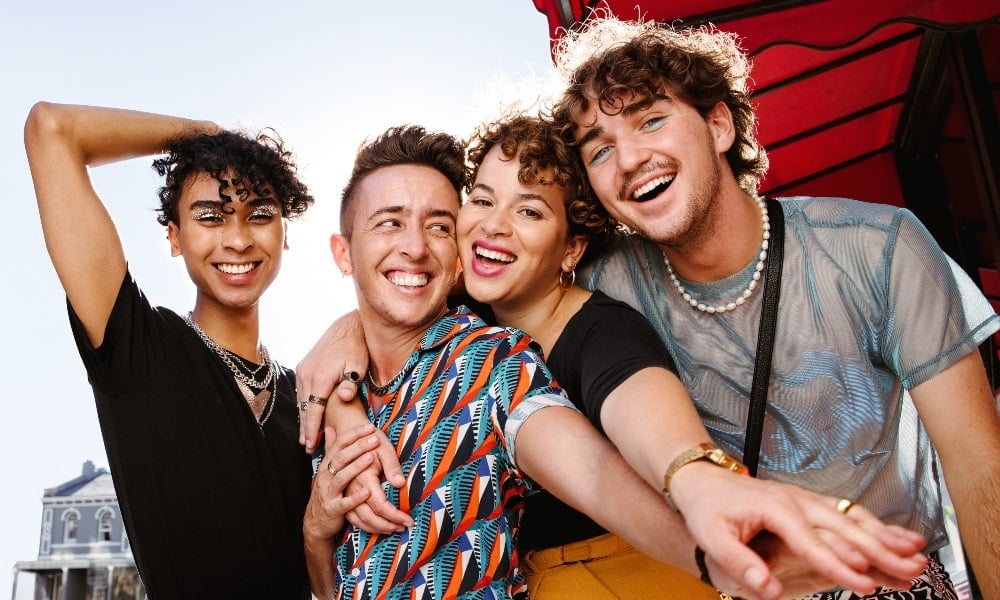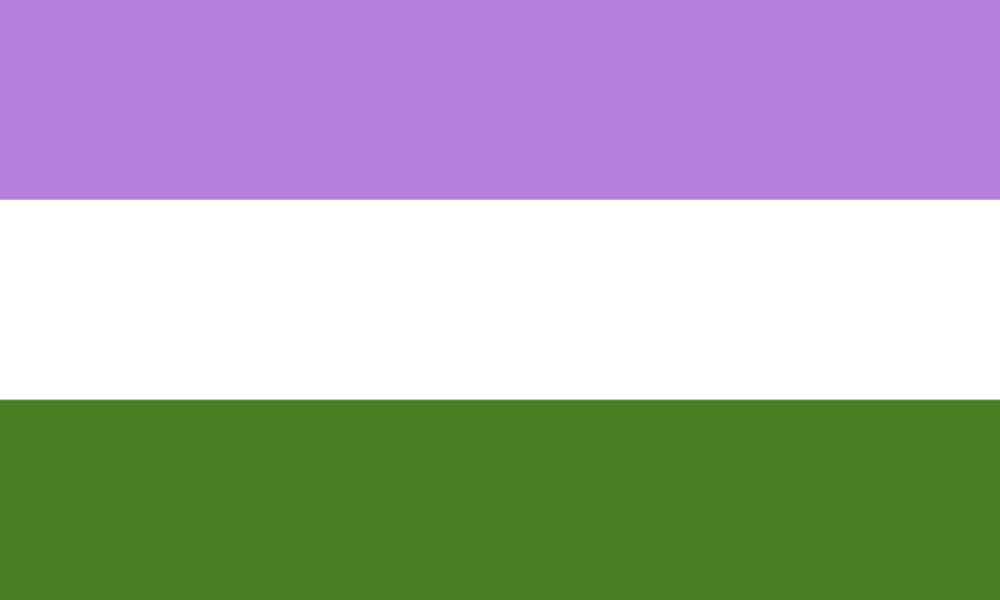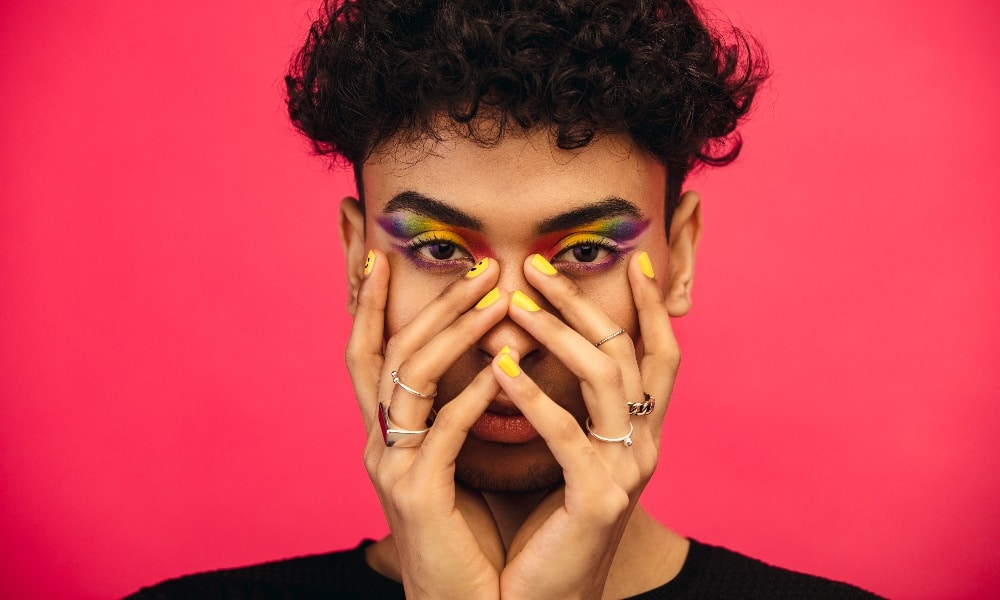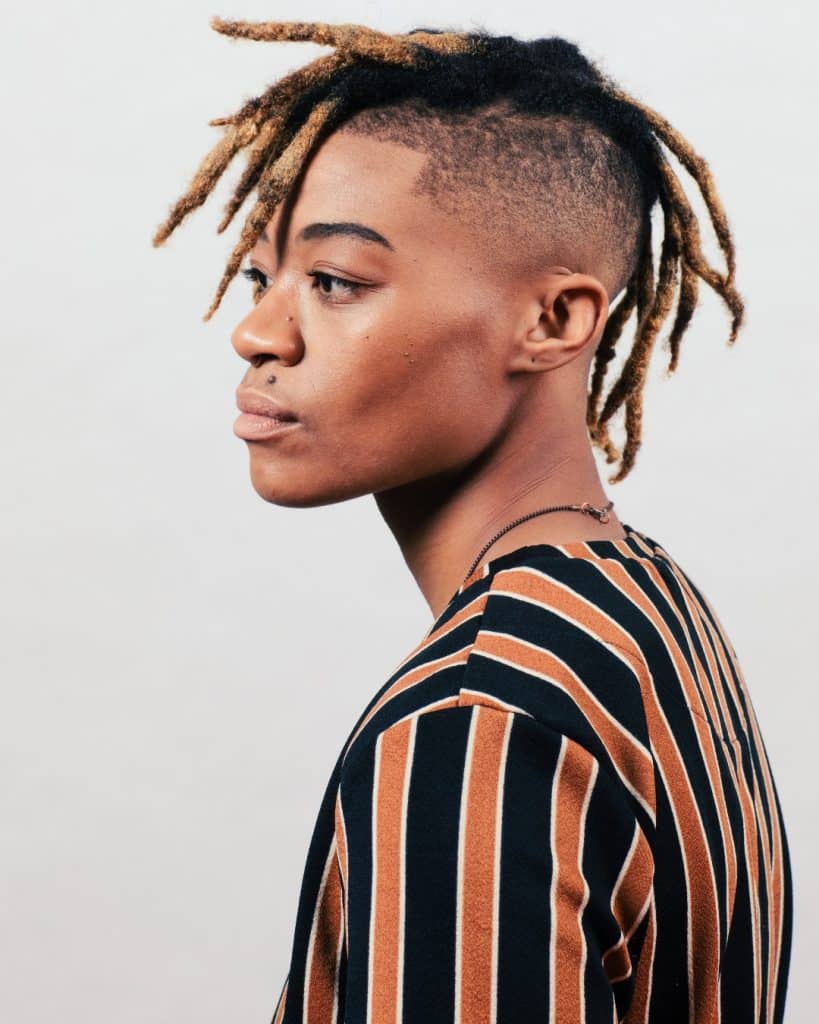Everything You’ve Ever Wanted To Know About The Genderqueer Flag.
The genderqueer flag is one of the newest (and simplest) banners used by the LGBTQ community during Pride events and beyond. But despite its relative simplicity, it has a colorful history and deep meaning that resonates with many folks who identify as genderqueer.
Keep reading to learn more about the genderqueer flag, its meaning and history, and what it means to be genderqueer.
Related | Is Zac Efron Gay, Bi, Or Queer?
What Does Being Genderqueer Mean?
Being genderqueer means that a person finds themselves somewhere on the gender spectrum as neither categorically “female” nor “male.” Instead, genderqueer individuals may relate to specific feminine or masculine concepts but not necessarily abide by the idea that there are only two genders.
In short, some genderqueer people may not relate to gendered thinking at all. The truth is that there isn’t a static definition of genderqueer, but that’s by design. It is an umbrella term for anybody who doesn’t see themselves fitting into the gender binary in the traditional sense.
As for pronouns and gender expression, genderqueer people can use any combination of pronouns and styles to express themselves. This doesn’t make them any less genderqueer.

Jacob Lund / Shutterstock
What’s The Difference Between Genderqueer And Non-Binary?
Within the LGBTQ community, the terms genderqueer and non-binary are often used interchangeably. Some people consider genderqueer to be broader in its scope of identities. According to some folks, genderqueer includes “everyone who isn’t cisgender,” while non-binary individuals are neither male nor female.
TL;DR: genderqueer refers to everyone who isn’t necessarily cisgender, while non-binary refers to people who identify as neither male nor female.

Yaroslav Melnik / Shutterstock
The Genderqueer Flag
The genderqueer flag shares many visual elements with other pride banners used by folks in the LGBTQ community. It uses colored stripes that embody specific things about the gender identity or sexual orientation it’s supposed to represent.
The Genderqueer Flag’s Meaning
While this green, white, and lavender banner may seem simple compared to other common pride flags, its triple-color design encapsulates the experience of being genderqueer. Here’s what it means based on each color:
- Lavender: This color results from a mixture of pink and blue, which are traditionally used to represent females and males, respectively. But more than just adhering to the socially constructed idea of gendered colors, the genderqueer flag uses purple to honor the transgender flag’s representation of male and female. Moreover, many people associate purple (or lavender, in this case) with queerness.
- White: The white bar on the genderqueer flag represents the agender identity. This is similar to the white stripe seen on the trans flag.
- Chartreuse green: The designer chose this specific shade of green because it’s the inverse of lavender. It represents the mixing of the gender binary. By inverting lavender, the genderqueer flag aims to represent everyone who doesn’t want to rely on or abide by the idea of a binary when self-identifying.
With all of this said, it’s important to note that the stark difference between the flag’s stripes does not mean that these ideas are separate. Instead, these identities and concepts are interrelated and represent the varied nature of gender identity.
As a result, gender identities that may not necessarily be embodied by a specific color may still use the genderqueer flag.

Jacob Lund / Shutterstock
The Genderqueer Pride Flag’s History
In 2010, Marilyn Roxie designed the modern genderqueer flag. After three revisions that experimented with different color combinations and patterns. Although many people use and embrace the designs, some share them on social media.
However, shortly after Marilyn Roxie posted the third and final iteration of the genderqueer flag, they started receiving messages accusing them of plagiarizing the United Kingdom suffragette movement’s banner.
Beyond the lifting colors accusations, the UK suffragette movement is associated with local trans-exclusionary radical feminists or TERFs. This led many people to question whether or not the flag was designed in good faith.
Thankfully, Marilyn Roxie addressed these comments and questions quickly and succinctly by providing their rationale for choosing the lavender, white, and green banner.
Since then, there have been no further developments around the flag, and people worldwide have used it at many notable events in the late 2010s, such as:
- Capital Pride Parade 2016, Washington, DC
- Malmö Pride 2016
- Erie Pride 2017, Erie, Pennsylvania
- World Pride 2017, Madrid
- Amsterdam Pride 2017
- Copenhagen Pride 2017
- Capital Pride Parade 2018, Washington, DC
- Twin Cities Pride 2019, Minneapolis
- Brighton Pride 2019
- Manchester Pride 2019

Reyna Montgomery / Shutterstock
Final Thoughts On The Genderqueer Flag
The genderqueer flag may be simple, but it’s also incredibly inclusive. It represents everyone who relates to feminine and masculine ideas while also increasing the visibility of those who don’t follow the gender binary. As a result, its widespread use helped more people live their most authentic lives.
For more LGBTQ-oriented news, informational articles, and gossip, keep reading Gayety.
Related | Sam Smith Comes Out as Genderqueer, Non-Binary













